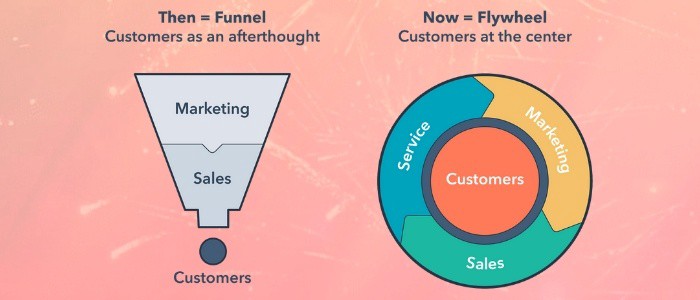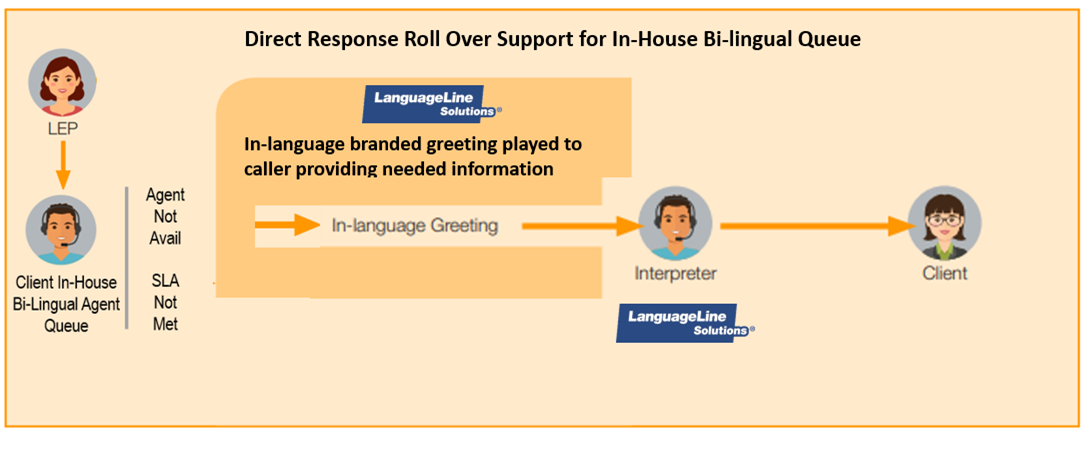
The Funnel is dead. Long live the Flywheel.
For years, organizations tracked sales based on where the prospect was in the “funnel,” which focused on generating traffic, then converting and closing leads.
The problem? Funnels produced customers, but they didn’t consider how those customers could help an organization grow. The momentum that was built in acquiring the customer was gone once the sale closed. Each day, funnel-devotees had to start anew; meanwhile, the customer became an afterthought.
Enter the flywheel, which puts the customer at the center. In this model, just as much attention is devoted to servicing and delighting the customer as the prospect.
Major retailers have been moving to a flywheel approach with increased conviction. As one of their delighted customers, I’m proof-positive that this is the case.

Three years ago, my wife bought me a barbeque from one of these retailers as a gift. It was usable but required frequent repairs. After three years of operational fits and bursts, I piled it into the back of my pickup, wobbled it into the store, and was amazed to receive a full refund.
My amazement turned to surprise just a few weeks later when I received a professional inquiry from the same retailer. It seemed that when dealing with customers by phone, this retailer — which in my experience had been so committed to exceeding expectations — was letting non-English speakers go to voicemail if there were not enough bilingual agents available in their call centers. Call-abandonment rates were high; customer satisfaction among multicultural customers was low.
Putting an Audience in Jeopardy
The retailer correctly realized that this approach was putting a massive audience segment in jeopardy. Over 65 million U.S. residents — or 21 percent of the U.S. population over the age of five — speak a language other than English at home. More than one out of every 12 people in the U.S. are limited English proficient (LEP), meaning they speak English less than very well. This group represents around nine percent of adults living in America. Their buying power is growing daily.
The negative experience these multicultural customers were having was not for a lack of effort — after all, the retailer had staffed its centers with bilingual agents to help those who designated a language preference other than English. It’s just that the company was having difficulty matching staffing levels with demand. They were seeking an answer for what to do when no bilingual agents were available or wait times had become excessive.
Fortunately, there is an innovative solution for call centers that sometimes experience more inbound traffic than their in-house bilingual agents can handle. The benefit is a consistent in-language experience for non-English callers, resulting in fewer dropped calls and higher customer satisfaction.
Think of this overflow solution as a back-up generator for call centers.
The Solution
Non-English speakers are accustomed to one of two phone experiences. Either they are given a toll-free phone number designated for their specific language of choice, or they are greeted with a menu of options (“Press 1 for English; 2 for Spanish …”).
Ideally the caller is quickly able to reach a bilingual call-center agent. But what happens if the volume of inbound calls exceeds the number of agents available to answer? The multicultural consumer then usually experiences one of three scenarios:
- They remain on hold interminably
- After holding for a designated amount of time, they are sent to voicemail
- Their call rolls over to an English-speaking agent, who asks them to hold
With LanguageLine’s® overflow solution, non-English-speaking customers are assured their calls will be handled in a consistent manner, with 100 percent of the experience taking place in their preferred language.
How Does It Work?
LanguageLine’s overflow solution is called DirectResponseSM. In this model:
- The non-English speaker begins the call as they always have, either by dialing an 800 number or selecting their preferred language from a menu.
- If a bilingual call agent is not available, the call is promptly connected to our DirectResponse platform.
- The caller is greeted with an in-language message. Within seconds, the call is answered by a live LanguageLine interpreter in the appropriate language.
- An available English-speaking agent is brought into the call.
- The call is completed with the non-English speaker, interpreter, and English-speaking agent all on the line.

When Should It Be Used?
DirectResponse is useful for all types of organizations, including:
- Retailers running a special promotion or during holiday season
- Insurance companies during open enrollment
- Utility providers during peak winter months or natural disasters
With a solution like DirectResponse, these organizations do not have to predict and staff for heavy call volume; nor do they have to staff call centers with seasonal bilingual interpreters. They can also use DirectResponse to staff their bilingual call centers during off-peak times when call volume is low and demand is unpredictable.
DirectResponse is an ideal solution for any organization that staffs its call center with bilingual agents and wants to delight its English-speaking and non-English speaking customers equally.
About LanguageLine
LanguageLine has been the world leader in innovative language-access solutions since 1982. The company sets the global standard for phone, video, and onsite interpreting, as well as translation of the written word. LanguageLine is trusted by more than 30,000 clients to enable communication with the limited English proficient, Deaf, and Hard of Hearing communities. LanguageLine provides the industry’s fastest and most dependable access to more than 35,000 professional linguists in 290-plus languages — 24 hours a day, seven days a week, 365 days a year. Please do not hesitate to contact us.

